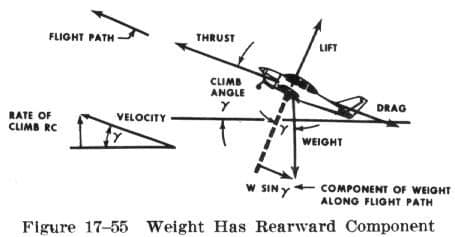Originally Posted by
FlightDetent
@vessbot
Perhaps I ventured too far. Hope the other message remains standing: for a given V2, there would be different acceleration schedules depending on runway length. Longer tarmac, less thrust, valid slower acceleration, satisfactory V2+10 at screen height by the end of CWY anyway.
Agreed. And to clarify, I'm not really addressing the original discussion about acceleration checks down the runway. I took a tangent just from your statement about what physically determines climb angle.
Would you check your statement applies well in the second segment case, for climb angle of 1.4 deg with flaps out and perhaps 11 deg pitch?
The AFM data confirms that for the same thrust the climb gradient is better if IAS is increased, the so-called "improved climb V2 schedule". Without thinking too much about it, I was building on the classical vector cross with L in the upward sense opposing the W, and L = c(l) * area * 1/2 * density * v^2. It has got to work somehow, nay?
My statement applies in any steady state condition, which this example of climbing at V2+10, is.(assuming the pitch is such that airspeed stays steady).
Looking at the vector diagram, it's easy but naive to look at L going up, and figure that what goes up on the page must make the airplane go up, hence L obviously figures into climb angle... common sense, no?

But you gotta remember that in steady state conditions (even in a steep climb) all forces sum to zero, so L cannot be more than W. If it is, then the flight path will be curving up (which is true, temporarily, as the climb is established from an initially level path). And since in a climb W is not opposing L, (it's angled back, pointing straight at the ground) then equilibrium L is equal to W times the cosine of the climb angle... in other words, slightly less than W. This is negligible in bugsmasher and airliner climb angles, but significant as you get more extreme. As in F-16GUY's picture above, where the cosine of the climb angle is zero, and so is L!

However what is significant for all airplanes, is that now there's a component of weight pointing aft along with drag, so thrust is not just pulling against the drag, but rather drag + the sine of the climb angle. Hopefully this makes it a little more intuitively easy to grasp why climb angle is only determined by excess thrust (i.e., thrust minus drag) and weight.
Originally Posted by
F-16GUY
Yes from a "fighter jets are cool" perspective, but if we're being serious than what I wrote above is as true for the J-3 Cub as for the F-16.